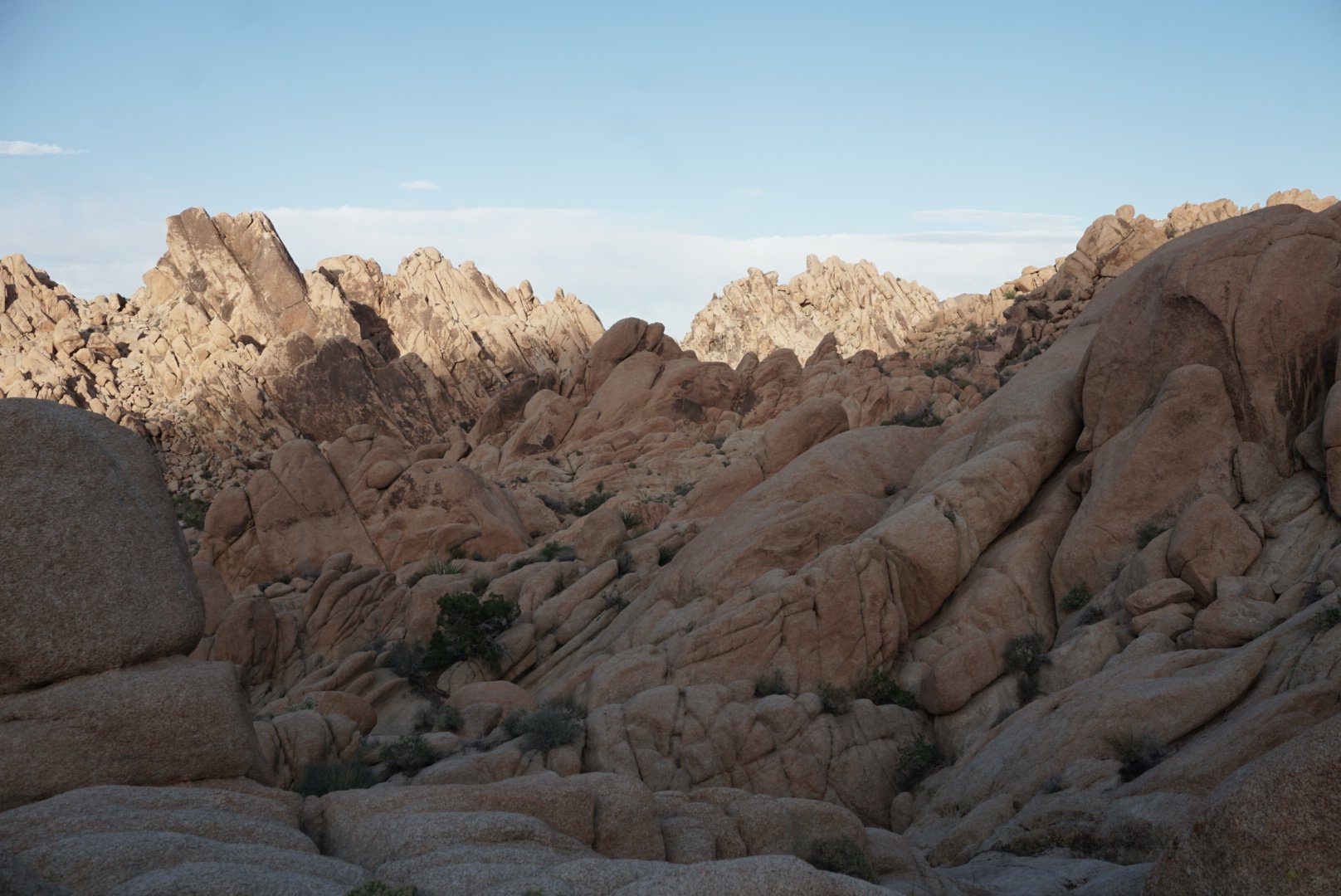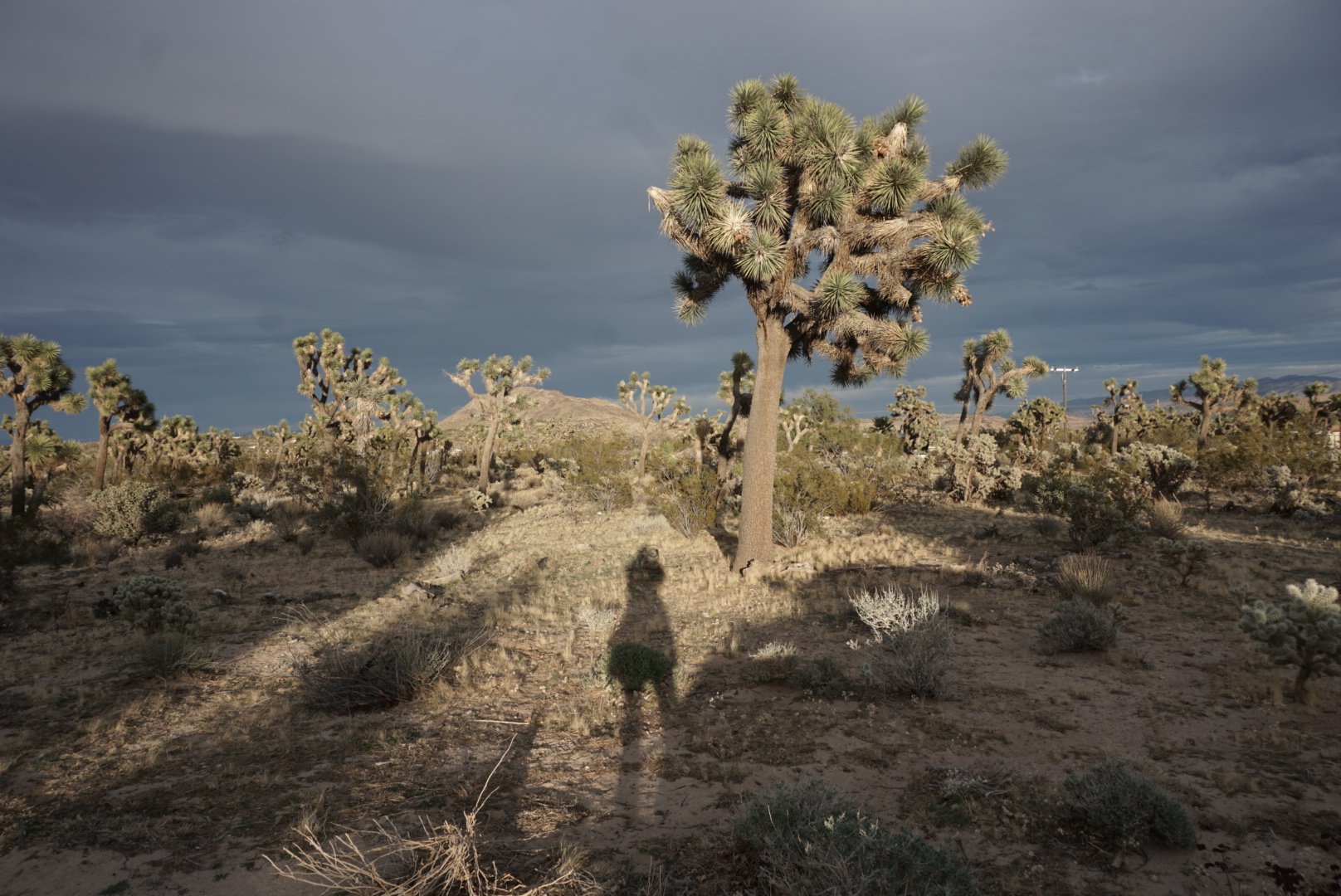Story of a Girl
Artist Residency: The Desert House, Yucca Valley, CA
March, 2020
Solo exhibit held at The Aviary
Vancouver, BC
July 4 - 16, 2020
My paintings are about nature and the environments that I have visited. In March 2020, that place was Joshua Tree, while attending The Desert House Artist Residency.
Joshua Tree is a national park in San Bernardino County, California. The citizens in the surrounding towns of Yucca Valley, Joshua Tree, and Twentynine Palms, comprising of eccentric Artisans, refuge-seeking Bohemians, and self-proclaimed Desert Rats, all help to cultivate the mystic appeal of the region. Off the grid and unique in every way, the national park feels otherworldly. The park is recognized by its unusual landscape of slow growing Joshua Trees and peach coloured boulders. These rock formations were made by erosion over time, sculpting smooth, rounded contours. Flash floods washed away the protective ground, creating stacked rock piles.
While attending a two-week artist residency, I spent everyday in the park. I have a deep relationship with my surroundings, often mediating on the pulse of the earth and the movements all around us. In chicken scratch, a journal entry from my time away reads:
“When I explore new places I discover more about myself. When I explore new places, my body’s senses are expanded — I see more + feel more. I am hungry to take it all in. In doing so I discover more about myself. I flex my sensory muscles + I grow as a person. I gain new perspectives. I heighten my awareness + strengthen my sensory threshold. I have more to pull from.”
While there I studied the sounds and smells of the earth and made note of the sensory memories I was developing. I also became aware of another experience that was taking place — the experience of isolation. Over the course of 2 weeks, the landscape became tertiary. The suggestively curvy rocks and tie-dye loving locals indicative of Joshua Tree become the perfect backdrop for self-reflection.
My abstract paintings facilitate a glimpse into a narrative. This body of work tells the story of female identity. They were born out of solo expedition and the unknown. They examine personal identity, wrapped up in feelings of adventure, isolation, joy, fear, and discovery. Although the tattered patchwork with splattered bleach and paint fondly reference the Joshua Tree environment, they are also a commentary on being female.
In this body of work, it was important for me to reference some key elements that are symbolically perceptive as historically female. I am drawn to patchwork for many reasons. Similar to Cubism, I love the multi-faceted perspectives that you can read from a piece. Patchwork is mostly a woman-centrered culture, stemming from traditionally sewn quilts, associated with family and ritual. They are a metaphor for a labour of love, carefully pieced together to serve as a warm heirloom. They often tell their own story, sometimes made from fabric with personal importance. Traditionally they made from scraps out of necessity as a way to save on material by the working-class. While working in the era of Covid-19, the opportunity to replenish supplies became rare and this idea felt especially relevant.
I focused on the colours of pink and peach, as observed under the desert sun. For me, these colours allude to the peach boulders and the pink sunsets. Soft shades of pink are most often synonymous with sensitivity and sweetness. They are commonly marketed for female products, accessories, and girl’s toys. In art, the colour pink can also read as kitsch, often used to introduce themes of innocence or inferiority. It is a colour that is not taken seriously.
During my time wandering solo in the desert, or driving the dusty backroads, I rehearsed possible worst-case-scenarios in my head. What would I say if I ran into someone else? A man perhaps? I play a role and take on the traits of cold, serious, and assertive. I use my body language to steer the direction of conversation: quick and to the point. I did this as a natural response to being by myself in another country, without cellphone reception. I am accustomed to being on the defensive. A learned response for survival.
Alone in my stream of consciousness, at first I didn’t consider how strange and reactionary this concept was, until I started to wonder if men think of these things? Is it a cumulative feeling that other women sympathize with? Moreover, how is this reactionary response shaping me a person, or us as a society?
While creating the work, I asked myself why am I conditioned to feel this way? I have not experienced a significant trauma-inducing events. However daily mircoaggressions against me by men have created habit-forming tendencies over the course of my life. Collective trauma affects community. Is it possible that the collective female experience has created a hereditary conditioning? I ask these questions to bring awareness to human experience and to promote solidarity.
This experience gave me further insight into who I am, by clearly seeing what I am not.
While hiking around Joshua Tree I became very aware of who I am. By instructing myself to act in a particular way, I was hoping to avoid looking like a victim. But in doing so my fundamental character was challenged. I wish I didn’t feel the need to play the role of someone else. I identify with those stereotypical female characteristics and the qualities associated with the colour pink. Societal influences often portray them as negative and something to be shameful of, but upon reflection I was more proud than ever to celebrate who I am. I use the colour pink in my work, not in an ironic denunciation, but in celebration. I want this work to honour femininity and serve as a tribute to these experiences.






